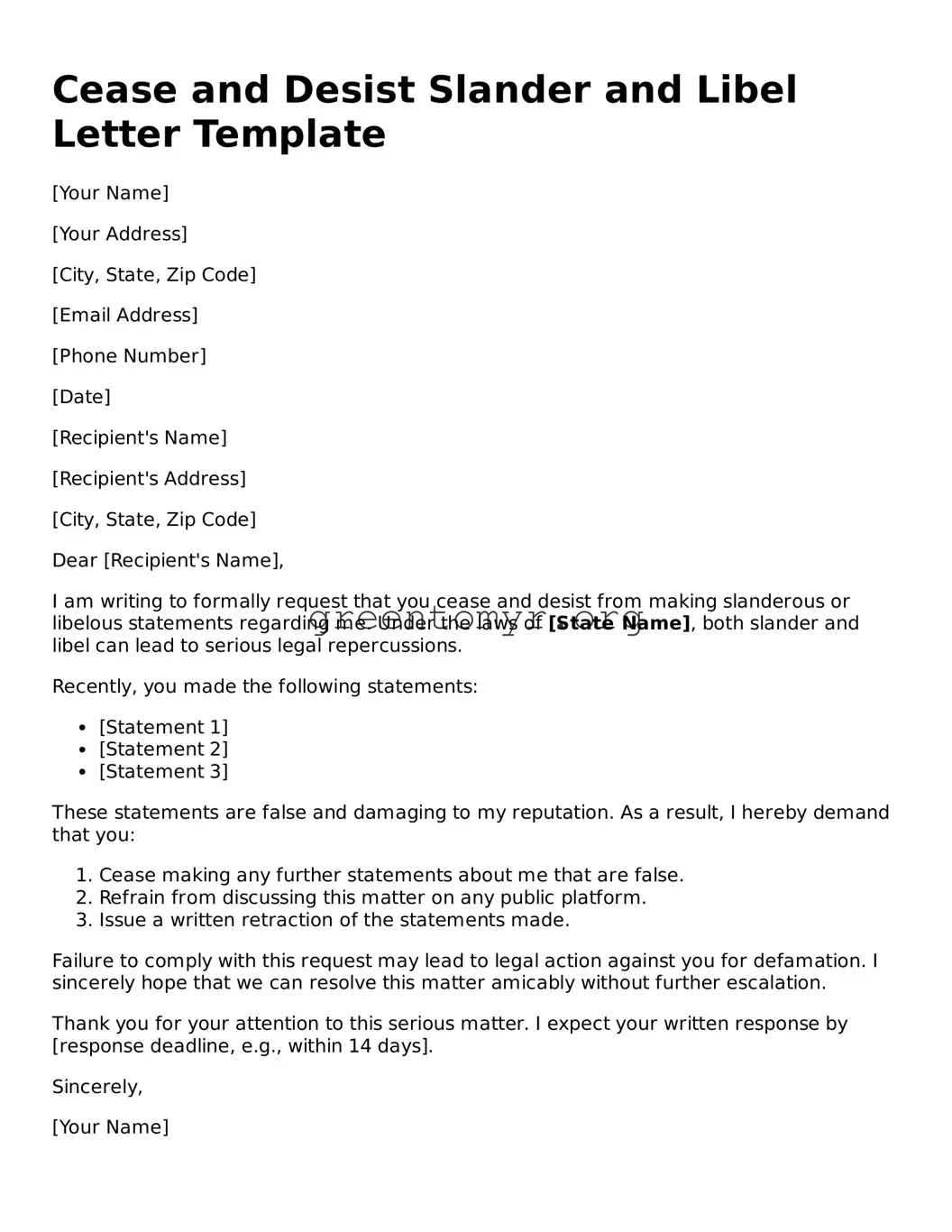Cease and Desist Slander and Libel Letter Template
[Your Name]
[Your Address]
[City, State, Zip Code]
[Email Address]
[Phone Number]
[Date]
[Recipient's Name]
[Recipient's Address]
[City, State, Zip Code]
Dear [Recipient's Name],
I am writing to formally request that you cease and desist from making slanderous or libelous statements regarding me. Under the laws of [State Name], both slander and libel can lead to serious legal repercussions.
Recently, you made the following statements:
- [Statement 1]
- [Statement 2]
- [Statement 3]
These statements are false and damaging to my reputation. As a result, I hereby demand that you:
- Cease making any further statements about me that are false.
- Refrain from discussing this matter on any public platform.
- Issue a written retraction of the statements made.
Failure to comply with this request may lead to legal action against you for defamation. I sincerely hope that we can resolve this matter amicably without further escalation.
Thank you for your attention to this serious matter. I expect your written response by [response deadline, e.g., within 14 days].
Sincerely,
[Your Name]
